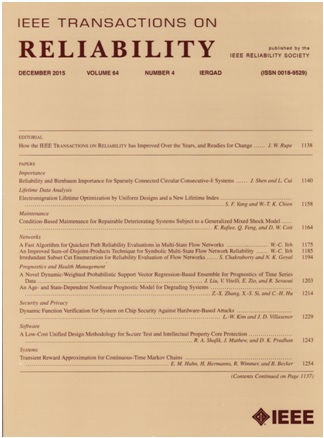Predictive and Multigranularity Resilience Assessment of Urban Transportation Based on Neural Controlled Differential Equation
IF 5.7
2区 计算机科学
Q1 COMPUTER SCIENCE, HARDWARE & ARCHITECTURE
引用次数: 0
Abstract
Crafting a dynamic and accurate resilience assessment method for urban transportation, marked by complex road networks and frequent disturbances, poses a significant challenge. Existing work mainly focuses on statically assessing historical traffic resilience and cannot dynamically divide spatial regions according to disturbance scales. In this article, we propose a predictive and multigranularity assessment method. First, we develop an attention-based spatial-temporal hypergraph neural controlled differential equation model, which can accurately predict traffic conditions under disturbances. Second, we construct a multigranularity disturbance propagation model that adaptively divides a traffic network into multiple granularities according to disturbance scales. Then, we design a real-time resilience assessment algorithm capable of quantifying spatial-temporal dynamic resilience indicators for each granularity area. Extensive experiments on urban transportation in California during heavy rainfall reveal an inverse relationship between California's resilience and rainfall intensity. In addition, its downtown exhibits strong resilience, while coastal and interior areas show relatively weaker resilience, with some interior areas experiencing prolonged recovery times.基于神经控制微分方程的城市交通弹性预测多粒度评价
在复杂的道路网络和频繁的干扰下,为城市交通制定动态和准确的弹性评估方法是一项重大挑战。现有工作主要集中在静态评估历史交通弹性,不能根据干扰尺度动态划分空间区域。在本文中,我们提出了一种预测性和多粒度的评估方法。首先,我们建立了一个基于注意力的时空超图神经控制微分方程模型,该模型可以准确预测干扰下的交通状况。其次,构建多粒度干扰传播模型,根据干扰尺度自适应地将交通网络划分为多个粒度;然后,我们设计了一种实时弹性评估算法,该算法能够量化每个粒度区域的时空动态弹性指标。对加州暴雨期间的城市交通进行的大量实验表明,加州的恢复力与降雨强度之间存在反比关系。此外,其中心城区表现出较强的恢复能力,而沿海和内陆地区的恢复能力相对较弱,部分内陆地区的恢复时间较长。
本文章由计算机程序翻译,如有差异,请以英文原文为准。
求助全文
约1分钟内获得全文
求助全文
来源期刊

IEEE Transactions on Reliability
工程技术-工程:电子与电气
CiteScore
12.20
自引率
8.50%
发文量
153
审稿时长
7.5 months
期刊介绍:
IEEE Transactions on Reliability is a refereed journal for the reliability and allied disciplines including, but not limited to, maintainability, physics of failure, life testing, prognostics, design and manufacture for reliability, reliability for systems of systems, network availability, mission success, warranty, safety, and various measures of effectiveness. Topics eligible for publication range from hardware to software, from materials to systems, from consumer and industrial devices to manufacturing plants, from individual items to networks, from techniques for making things better to ways of predicting and measuring behavior in the field. As an engineering subject that supports new and existing technologies, we constantly expand into new areas of the assurance sciences.
 求助内容:
求助内容: 应助结果提醒方式:
应助结果提醒方式:


